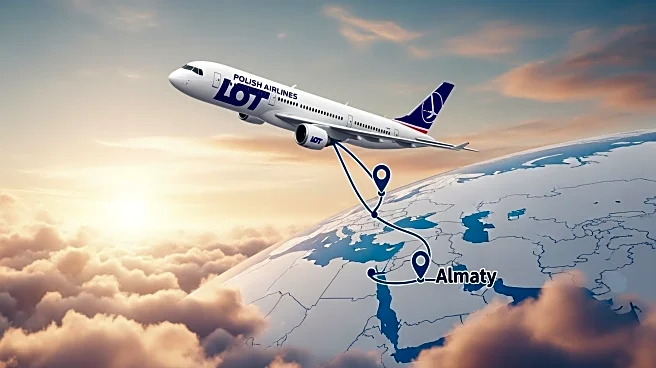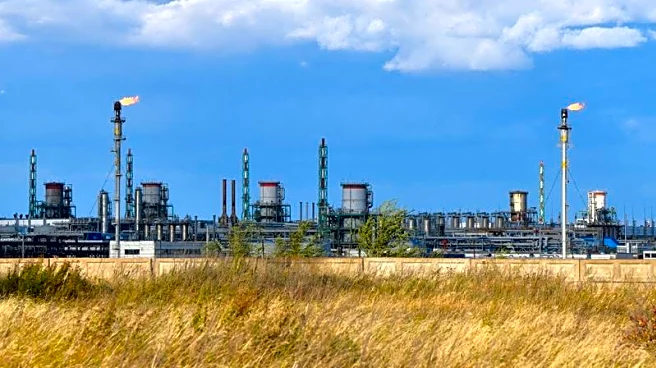What's Happening?
Kazakhstan has seen a significant increase in its migrant workforce, with over 550,000 international migrant workers now contributing to the country's travel and tourism industry. This marks a 21,000 increase since
January 2025, representing nearly 5% growth in under six months. The majority of these workers come from neighboring countries such as Uzbekistan, Russia, and Tajikistan, with Uzbekistan contributing the largest share. Migrant workers play a critical role in sectors like construction, wholesale trade, and social services, which are essential for sustaining growth and development in Kazakhstan. Their presence also influences travel patterns and the demand for tourism-related services, as many workers travel frequently between their home countries and Kazakhstan.
Why It's Important?
The influx of migrant workers in Kazakhstan has a notable impact on the local economy and travel infrastructure. It stimulates demand for various services in key tourism destinations, particularly in urban areas. The construction sector, being the largest employer of migrant workers, has seen increased investment in infrastructure, including transportation, hotels, and leisure facilities. This development benefits both the migrant community and tourists, as the country works to accommodate the increasing number of both migrant workers and visitors. Additionally, the cultural exchange fostered by the diverse migrant population enhances the experience for tourists, offering a broader range of international cuisines, events, and cultural offerings.
What's Next?
Kazakhstan's growing migrant population is expected to continue shaping its tourism landscape. The country's political stability, vast resources, and leadership vision provide a strong foundation for attracting both migrant workers and tourists. By establishing regular pathways for migration, Kazakhstan can further boost employment, remittances, and regional stability, all of which will contribute to the growth of tourism in the region. As Kazakhstan positions itself as a gateway to Central Asia, the intersection of migration and tourism will play a crucial role in the country's economic and cultural development.
Beyond the Headlines
While migration offers economic benefits, it also presents challenges, particularly in terms of employment conditions for migrant workers. Many workers remain in precarious employment, with issues such as lack of access to pensions and paid annual leave. These challenges extend to the broader travel industry, where employment benefits are often minimal. Addressing these issues through better labor protections and integration into the tourism sector could enhance the quality of service provided to tourists and improve the overall experience.












